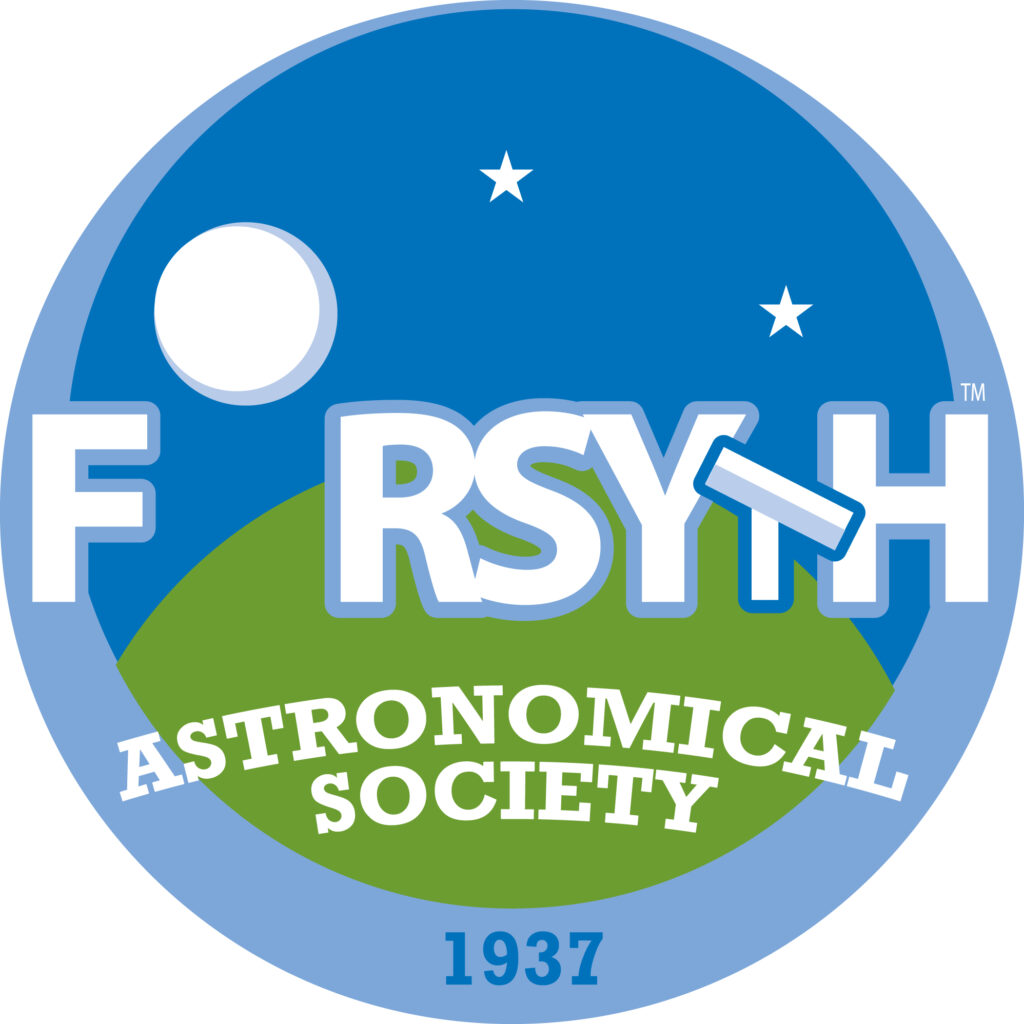Recently there has been a lot of news about asteroid 2024 YR4. Evidently there is a small chance that its orbit will intersect with the Earth in 2032. We at FAS thought it would be appropriate to provide you with updates on this potential event so that you can decide to either take your telescope out for a close look at the asteroid or run for cover. Don’t worry, as you can see below, the chance of the latter is very remote.
Near the end of January, the probability of an impact increased to over 1%. As a result, the International Asteroid Warning Network issued a potential asteroid impact notification on January 29. At the same time, NASA’s Center for Near Earth Object Studies (CNEOS) increased the asteroid’s Torino Impact Risk Assessment to 3, which is in the yellow zone – most asteroids never get above 1.

In early February, the impact probability rose to over 2%. By mid February, the probability of an impact increased some more to over 3%. Now, people were starting to get a little worried and the press picked up on it. However, over the last day or so, NASA has lowered its estimate of an impact to well under a 1%.
Just a quick update on February 24 – The impact probability has now dropped to almost zero. The Torino scale has also been reset to 0.
Asteroid 2024 YR4 is estimated to be around .055 km (180 feet) wide and if it does “impact” the Earth, the likely result will be what NASA calls an “airburst”. This is similar to what was observed over Chelyabinsk in 2013 or, worst case, at Tunguska in 1908. In any event, it is far smaller than the asteroid that killed off the Dinosaurs 66 million years ago.

Here is the latest (to be updated periodically).
The folks at CNEOS (The Center for Near Earth Object Studies) forecast the potential impact date to be December 22, 2032.
Updated February 24, 2025
- On February 21, 2025, they estimate the chances of it hitting the Earth at .28% (1 in 360 odds). This means there is a 99.72% chance that it will miss the Earth.
- Update February 24, 2025: The impact probability has dropped to .0027% (1 in 37,000 odds). This means there is a 99.9973% chance it will miss the Earth.

For more information, see the following.
- Molly L Wasser. “Latest Calculations Conclude Asteroid 2024 YR4 Now Poses No Significant Threat to Earth in 2032 and Beyond.” NASA. February 24, 2025.
- Ashley Strickland. “The riskiest asteroid on record now has near-zero chance of hitting Earth.” CNN. February 24, 2025.
- Robert Lea. “Earth” safe from ‘city-killer’ asteroid 2024 YR4 ‘That’s impact probability zero folks!’” space.com. February 24, 2025.
- Patrick Pester. “Asteroid YR4 impact odds plummet as NASA changes threat level of ‘city-killer’.” Live Science. February 21, 2025.
- Korey Haynes. “Asteroid 2024 YR4’s odds of hitting Earth just got a lot smaller.” Astronomy Magazine. February 20, 2025.
- “Additional Observations Continue to Reduce Chance of Asteroid Impact in 2032.” NASA Planetary Defense. February 20, 2025.
- Robert Lea. “Don’t worry. Asteroid 2024 YR4 now has a 99.72% chance of missing Earth in 2032.” space.com. February 20, 2025.
- Robert Lea. “NASA massively lowers impact risk of ‘city-killer’ asteroid 2024 YR4 to 1 in 360.” space.com. February 20, 2025.
- Molly L Wasser. “Dark Skies Bring New Observations of Asteroid 2024 YR4, Lower Impact Probability.” NASA Planetary Defense. February 19, 2025.
- “2024 YR4 Surpassed Apophis As ‘Riskiest’ Asteroid Ever Detected.” ESA. February 18, 2025.
- Patrick Pester. “Chance of ‘city-killer’ asteroid 2024 YR4 smashing into Earth rises yet again to 3.1%, NASA reports.” Live Science. February 17, 2025.
- Joanna Thompson. “‘City-killer’ asteroid has a 1-in-43 chance of smashing into Earth in 2032, NASA says.” Live Science. February 7, 2025.
- “Asteroid 2024 YR4 reaches level 3 on the Torino Scale.” Center for NEO Studies (CNEOS). January 31, 2025.
- “Potential Asteroid Impact Notification 2024 YR4.” International Asteroid Warning Network (IAWN). January 29, 2025.
- Robert Lea. “Astronomers discover 196-foot asteroid with 1-in-83 chance of hitting Earth in 2032.” space.com. January 28, 2025.
- Tereza Pultarova. “Asteroid apocalypse: How big must a space rock be to end human civilization?” space.com. September 26, 2022.
- “2024 YR4 FAQ.” NASA.
- “Sentry: Earth Impact Monitoring 2024 YR4.” Center for Near Earth Object Studies, NASA/JPL-Caltech.
- “Near Earth’s Object Coordination Centre 2024 YR4.” ESA.
- “Near Earth’s Object Coordination Centre, Risk List.” ESA.
- “Torino Impact Hazard Scale.” Center for Near Earth Object Studies, NASA/JPL-Caltech.
- “Asteroids.” FAS Astronomers Blog. October 2020.
- “You Don’t Need to Duck.” FAS Astronomers Blog. March 2024.
- “Asteroid 1 Dinosaurs 0.” FAS Astronomers Blog. December 2023.
- “Don’t Be Afraid To Look Up.” Kaleideum Blog. January 11, 2020.


You must be logged in to post a comment.